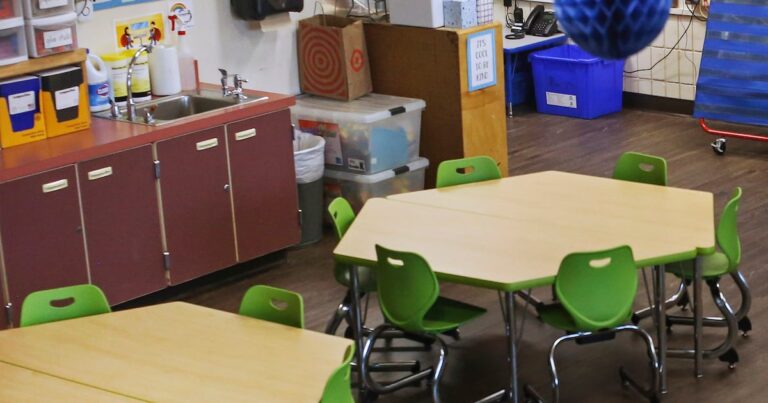In the fall of 2019, Tom Begich and I sat in the Atwood Building lobby, waiting to meet with Gov. Mike Dunleavy. That meeting marked the start of a four-year effort to pass the Alaska Reads Act — a comprehensive policy aimed at improving early literacy for Alaska’s children.
The Alaska Reads Act isn’t perfect, but it is a meaningful, bipartisan step toward giving every child in public school a fair shot at learning to read. Already, it’s shown promising early gains in literacy for K–3 students statewide. However, in the face of deep funding cuts to public education services across Alaska, that progress now faces potential setbacks.
Crafting the Alaska Reads Act involved more than just a few lawmakers. It was built on years of cooperation, with community input shaping its development. Although I don’t have years of experience in the classroom or school administration like other elected and non-elected officials, the Alaska Reads Act taught me the critical importance of early and frequent community and stakeholder involvement.
The Alaska Reads Act became law during the pandemic, at a time when many of our schools were already struggling under the burden of stagnant funding. School leaders made it clear that for the legislation to be implemented effectively, they needed more than just guidance. Schools would require funding for teacher training, specialized classroom resources, summer tutoring, and family outreach.
Yet after a decade of flat funding, rising costs, and multiple years of gubernatorial line-item vetoes of education funding, our schools no longer have the resources they need. Today, many schools are being forced to cut advanced math courses, foreign languages and arts programs to stay afloat. This is because public education hasn’t seen a meaningful increase in stable and predictable state funding, despite inflation rising by nearly 43% over the past decade.
That changed this year when the legislature made historic investments in public education. Those investments, along with a new statewide classroom size policy and targeted funding to support reading proficiency, will help our students succeed.
Currently, 94% of students in neighborhood schools take the state assessments. Unfortunately, fewer than 15% of public homeschool students are assessed. The data we have tells us our state’s early literacy scores are improving for students in neighborhood and charter schools, but the lack of data makes it nearly impossible to assess how well students are performing in our publicly funded homeschool programs. What we do know is that homeschool graduation rates are falling behind those of neighborhood and charter schools. This should concern everyone.
Alaska offers several public school options, and as a lawmaker, I don’t take sides when it comes to supporting or holding any school program accountable that uses public money. Every student should be measured by a standard that ensures we’re meeting their educational needs, regardless of the model. Right now, that’s not happening.
Gov. Dunleavy makes it very clear he won’t support increasing neighborhood school funding until student outcomes improve, but he remains silent on the alarming trends we see happening in other publicly funded school programs. Supporting parental choice in public education should never be about pitting one type of program against another, nor holding hostage adequate school funding for unvetted policies.
With many rural schools in disrepair and classrooms across the state lacking a certified teacher at the start of each school year, it’s unclear how students in our neighborhood schools will perform better academically without adequate school funding.
In too many places, students are learning in buildings with black mold, leaking roofs, or rodent infestations. They are stuffed into classrooms with dozens of other kids and only one overworked teacher. This is not a system set up for success. It’s a system guaranteed to fail.
During the last legislative session, the Senate Education Committee thoroughly studied and examined the Governor’s public education proposals. While a handful of his more partisan priorities did not make it into the final bill, many of his education initiatives, including administrative relief for charter schools and increased funding for reading proficiency, were included in the bill that the governor ultimately vetoed.
The bill that the governor vetoed not only increased the Base Student Allocation (BSA) by a significant amount, but also addressed the decade of flat funding for student transportation. The legislation simplified the process to renew existing charter schools and increased state funding for career and technical programs.
Most importantly, the legislation included a two-year legislative task force, which will dig into how we fund schools, evaluate emerging ways to modernize our education system, and find solutions that will better support all of Alaska’s students.
Families are leaving the state, not because of our schools, but due to a lack of opportunities. To change these trends, we need to stop believing that underfunding schools will lead to improved results. People don’t move to places where every news story tells the saga of struggling schools, high teacher turnover, or sewage in school parking lots.
Genuine, lasting success requires good public policy written with real stakeholder engagement, bipartisan support, and adequate resourcing. By continuing to underfund schools while demanding unvetted partisan policies, the governor isn’t just adding to the burden of our already stressed public education system; he’s wasting our children’s future.
Sen. Löki Gale Tobin of Anchorage is chair of the Alaska Senate Education Committee and currently is a PhD student in Indigenous Studies at the University of Alaska Fairbanks.
• • •
The views expressed here are the writer’s and are not necessarily endorsed by the Anchorage Daily News, which welcomes a broad range of viewpoints. To submit a piece for consideration, email commentary(at)adn.com. Send submissions shorter than 200 words to letters@adn.com or click here to submit via any web browser. Read our full guidelines for letters and commentaries here.

